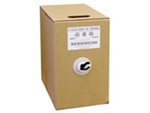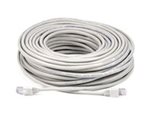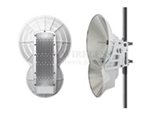
Cat5e and Cat6 Bulk and Pre-Terminated Ethernet Cable | IN Stock
GNS Wireless stocks cat5, cat5e and cat6 Ethernet patch cables, crossover cables, and bulk network cable. We stock shielded cat5e, riser cable, direct burial cable and all tools and accessories. Various connections will require different kinds of ethernet cables and other cords, so determining your system needs should always be the first step before you buy ethernet cables. Our ethernet cables for sale come in different categories and can meet various needs depending on what you select. Cat5 cables as well as cat6 cables are composed of a twisted pair structure, meaning a coupled set of wires is wrapped within a protective insulation casing.
Category 5 cabling, also known as Cat5, is an older type of network cabling. Cat5 ethernet cables were made to support theoretical speeds of 10Mbps and 100Mbps. Since Cat5 is an older type of cabling, you probably won’t see them very much in the store, but you may have gotten some with an older router, switch or other networking device.
Category 5 enhanced cabling, also known as Cat5e, is an improvement on Cat5 cabling. Cat5e ethernet cable was made to support 1000 Mbps “gigabit” speeds, so technically it’s faster than Cat5. It also cuts down on crosstalk, the interference you can sometimes get between wires inside the cable. Both of these improvements mean it's possible to get faster, more reliable speed out of Cat5e cabling compared to Cat5. GNS Wireless still uses cat5e Ethernet cables for most of our installations. We generally use the shielded cable, which is weather resistant, and supports power over Ethernet. Cat5e ethernet cable is reliable, cost effective, and easy to install. If a customer requests cat6 Ethernet cables, or if the application calls for it, well..we have that in stock too.
Category 6 cabling is the next step up from Cat5e and includes a few more improvements. Cat6 ethernet cable has even stricter specifications when it comes to interference, and it's capable of 10-Gigabit speeds in some cases. You probably won’t use these speeds in your home, and the extra interference improvements won’t make a huge difference in regular usage. If you’re buying a new cable, you might as well get Cat6 ethernet cable since it is an improvement over its predecessor. Keep in mind when using Cat6 Ethernet cables, you will need a cat6 capable RJ45 plug. On the outside of the RJ45 it looks the same, but the inside of the RJ45 plug is different for cat6 and cat5e cables. Cat 6 isn't perfect though. Some installers think Cat 6 Ethernet cable is harder to install. Cat 6 conductors are twisted more tightly, and there's more insulation. So if you need to cut cables you need to go a little slower.
Cat 6 cable is full-on certified to handle Gigabit speeds--it's meant to handle it and it does it the best. It's also suitable for any 10-Gigabit uses that may come along someday; although at that point, you're pushing the limits of Cat 6. And let's not get into Cat 7 and its supposed 40-Gigabit speeds.
Please note that your network speed is different than your internet speed. Chances are upgrading your cat5 Ethernet cables isn’t going to make a difference in how fast you load your favorite website — your internet speeds are still much slower than speeds on your network. If you’re transferring files between computers using gigabit-compatible hardware can make things move along faster. To get gigabit speeds, you’ll also need a gigabit-compatible routers, network cards, switches. Most modern routers and cards are already capable of these speeds.
For best practice, you're better off using wired where you can and wireless for portable devices or those devices in very hard-to-cable areas. This works extremely well in very large homes, motels, large offices, and warehousing. For RV Parks, Campgrounds, Marinas, and any other large outdoor or open space venue, using 802.11N or 802.11AC wireless networking will provide faster, more efficient networking.




